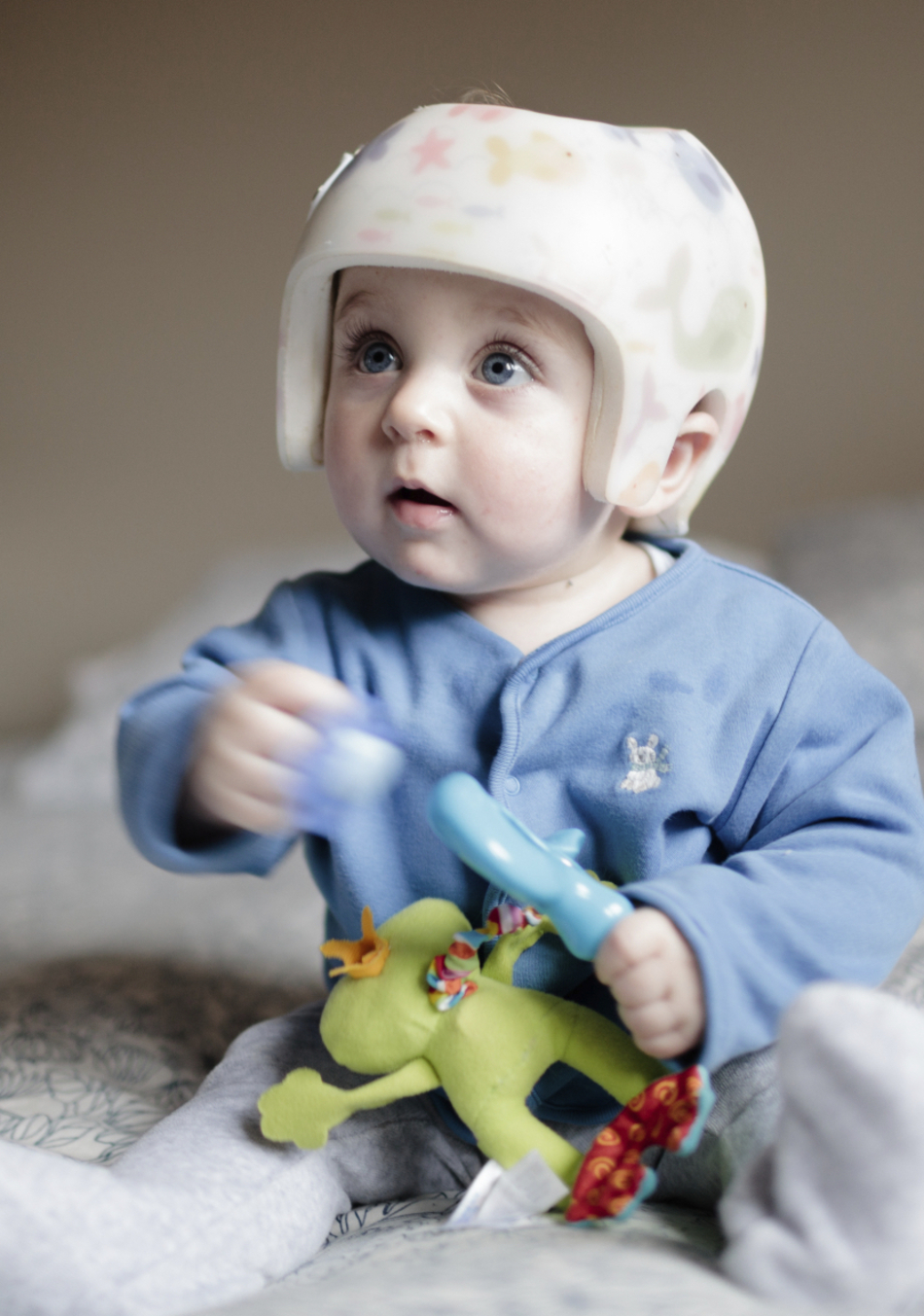Episode Transcript
Interviewer: You notice that your child is starting to develop a flat or misshapen head. Is that something to really worry about? And what should you do? We'll discuss that with Dr. Barbu Gociman next on The Scope.
Announcer: Medical news and research from University of Utah physicians and specialists you can use for a happier and healthier life. You're listening to The Scope.
Interviewer: Dr. Barbu Gociman is a plastic surgeon who specializes in pediatric plastic surgery at the Craniofacial Program at the University of Utah Health Care. If your child is showing signs of a flat or misshapen head, could be a couple of things going on. We're going to find out more about that right now. Is that always something to worry about?
Dr. Gociman: We see two different patterns. One would be the parents are really worried, the other one, the pediatrician is very worried. In either instance, there are two different causes. The more common deformity that you see is actually acquired after birth, is due to positioning in the uterus. As babies, we have a position of comfort. That is whatever the position of the uterus is. So once the baby is born, they tend to reproduce that position and preferentially just lay on one side.
As the brain pushes the bones and the head keeps growing, because the baby preferentially lays only on one spot, that becomes flatter and flatter. The rest of the cranium grows, and suddenly at three, four, five months of age, your baby has a flat head. Usually, it's on the back of the head one side. Obviously, there's a different degree of severity. We say usually about 1 in 300 babies has a very severe deformity that will need some time of aggressive management. That is the least severe problem because it's just an easy fix. Basically, you have the baby not lay on that spot. We will have to have the parents aggressively trying to rotate the baby from that spot. The challenge is the baby will always want to turn back into the same position.
Interviewer: How do you prevent that? What are some strategies you have to prevent that?
Dr. Gociman: Unfortunately, there's no one perfect strategy. All the pillows and things that try to make it through the FDA were to kind of reposition the baby in the crib did not make it because of safety hazards. They can act as chokers, basically. So there's no good device that will keep the baby from rotating so it's just the diligence of the parents. Some parents will be more diligent than others.
Interviewer: And you just have to go back in there and just . . .
Dr. Gociman: Keep rotating. Obviously, once the baby is growing a little bit more, more tummy time, more sitting position and that will alleviate the problem.
Interviewer: Gotcha.
Dr. Gociman: If the deformity is really severe, then we recommend a helmet, which the helmet is worn for 24 hours a day, basically. That will take off all those problems where the parents will have to go repeatedly and change the position.
Interviewer: The harm is not only a misshapen head, but it could actually affect the brain?
Dr. Gociman: There's absolutely no influence of the developing brain. It's just an aesthetic problem.
Interviewer: Oh, really? Okay. Well, I guess that's a relief on some level.
Dr. Gociman: This is the more common problem of a flat head. Unfortunately, there is a much more severe problem that could lead to a flat head or misshaped head. The technical name is craniosynostosis, in which one of the sutures, which normally separates the different bones into the cranium, fuses prematurely. The sutures usually fuse when we are in our 20s or 30s. If a suture fuses prematurely, either in utero or as a very, very young baby, the head will be forced to compensatorily grow and you will deal with a really misshapen head.
One suture can be fused, or multiple sutures can be fused. The more sutures that are fused, the more severe the deformity, and the higher the chance that misshapen head will put pressure on the growing brain and lead to developmental problems. That is a condition that will require surgical intervention. We do some surgical intervention, minimally invasive, in which the operation is done in conjunction with your surgery that is much quicker and the patients recover much easier.
We also, for more severe forms or for delayed presentation, the patient will require really very, very significant operations and the patient will require prolonged hospitalization, intensive care unit care after the operation. So, definitely, the way to tell the difference between the two, although we highly have a suspicion on physical exam, is to do a CT scan. The CT scan will tell us exactly if a suture is fused or not. We'll know 100%. We usually, on clinical exam, we can have a 90% to 99% suspicion of if we deal with one or another. Usually, for positional plagiocephaly, it's very easy to make the diagnosis just on physical exam.
Interviewer: That's the one where sleeping in the same position too much . . .
Dr. Gociman: And which is the more common one.
Interviewer: Gotcha.
Dr. Gociman: In order to make the exact diagnosis, we'll be happy to see you to our Craniofacial Program at the University of Utah, to see you and discuss what the problem is and what the next steps will be.
Announcer: TheScopeRadio.com is University of Utah Health Sciences radio. If you like what you heard, be sure to get our latest content by following us on Facebook. Just click on the Facebook icon at TheScopeRadio.com.
